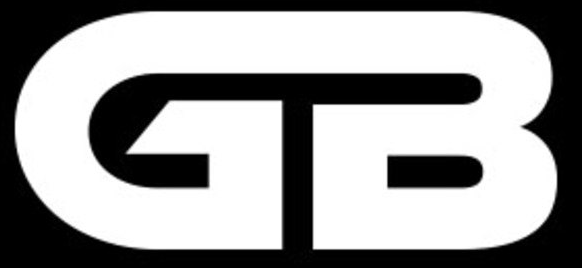Sketching is more than just a form of art; it’s a fundamental way of capturing the world around us. Whether you’re doodling in a notebook or meticulously drawing a portrait, sketching offers a unique blend of creativity and precision. But why is sketching so important? Not only does it help in honing artistic skills, but it also serves as a powerful tool for observation, planning, and expressing ideas.
The History of Sketching
Sketching has been a part of human history since the dawn of time. Early sketches can be found in prehistoric caves, where our ancestors depicted their surroundings and daily life. As civilizations evolved, so did sketching techniques and tools. From the detailed works of the Renaissance to modern digital art, sketching has continually adapted and grown, reflecting the changing world and artistic trends.
Materials Needed for Sketching
Before you start sketching, it’s essential to have the right materials.
Essential Tools
- Pencils: Graphite pencils are the most common, ranging from hard (H) to soft (B). A good set typically includes HB, 2B, 4B, and 6B pencils.
- Paper: Sketchbooks or loose sheets of sketching paper are ideal. Look for medium-weight paper with a slight texture.
Additional Supplies
- Erasers: Kneaded and vinyl erasers are great for removing mistakes and adding highlights.
- Sharpeners: A quality sharpener ensures your pencils remain precise.
- Blending Tools: Stumps and tortillons help blend graphite for smooth shading.
Basic Techniques of Sketching
Understanding Lines
Lines are the building blocks of any sketch. Practice drawing straight, curved, and zigzag lines to gain control over your pencil.
Shading Techniques
Shading adds depth and dimension. Techniques include hatching (parallel lines), cross-hatching (intersecting lines), stippling (dots), and blending.
Creating Texture
Textures make your sketches more realistic. Experiment with different strokes and pressures to mimic surfaces like wood, fabric, and metal.
Sketching for Beginners
Simple Shapes and Objects
Start with basic shapes: circles, squares, and triangles. Combine them to form more complex objects.
Developing Observation Skills
Sketch what you see, not what you think you see. Focus on light, shadow, and perspective.
Practice Exercises
Daily practice is key. Set aside time to sketch simple objects like fruits, cups, and plants.
Advanced Sketching Techniques
Perspective Drawing
Mastering perspective is crucial for realistic sketches. Practice one-point, two-point, and three-point perspectives to understand how objects relate to each other in space.
Anatomy and Proportions
Study the human body and animal anatomy. Understanding proportions helps in creating lifelike sketches.
Capturing Movement
Sketch dynamic poses and gestures. Quick, loose sketches can capture the essence of movement.
Sketching Different Subjects
Nature and Landscapes
Sketching nature requires observing details like trees, mountains, and water. Focus on light and shadow to create depth.
Portraits and Figures
Portraits are challenging but rewarding. Study facial features and expressions. Figures require understanding anatomy and proportions.
Still Life
Arrange objects and study their relationships. Focus on composition, light, and shadow.
Digital Sketching
Tools and Software
Digital sketching opens new possibilities. Popular tools include tablets like Wacom and iPads with software like Adobe Photoshop, Procreate, and Corel Painter.
Techniques and Tips
Digital tools offer layers, undo options, and a variety of brushes. Experiment with these features to enhance your digital sketches.
Tips for Improving Your Sketching Skills
Regular Practice
Consistency is key. Sketch daily, even if it’s just a few minutes.
Studying Other Artists
Learn from the masters. Study sketches from different artists and eras to understand various styles and techniques.
Joining Sketching Communities
Online forums, local art classes, and social media groups provide support, feedback, and inspiration.
Common Mistakes to Avoid
Overworking Your Sketch
Know when to stop. Overworking can make your sketch look muddy.
Ignoring Proportions
Always check proportions. Use guidelines to maintain accuracy.
Not Using References
References are invaluable. They provide details and accuracy that imagination alone can’t achieve.
Inspiration and Motivation
Finding Your Style
Experiment with different techniques and subjects. Your unique style will emerge over time.
Staying Inspired
Keep a sketchbook handy. Capture ideas, doodles, and inspirations whenever they strike.
Overcoming Artist’s Block
Take breaks, try new mediums, or collaborate with other artists to reignite your creativity.
Sharing Your Sketches
Building a Portfolio
Organize your best works. A strong portfolio is essential for showcasing your skills.
Social Media and Online Platforms
Share your sketches on platforms like Instagram, Behance, and DeviantArt to reach a wider audience.
Getting Feedback
Constructive criticism helps you grow. Don’t shy away from feedback.
Sketching as a Career
Freelance Sketching
Offer your skills for commissions, illustrations, and concept art.
Working in Creative Industries
Sketching is valuable in fields like animation, gaming, fashion, and architecture.
Building a Client Base
Network, market your skills, and deliver quality work to build a loyal client base.
The Benefits of Sketching
Enhancing Creativity
Sketching stimulates the brain and encourages creative thinking.
Improving Mental Health
It’s a therapeutic activity that reduces stress and anxiety.
Developing Patience and Focus
Sketching requires time and concentration, improving patience and focus.
Conclusion
Sketching is a rewarding and accessible form of art. Whether you’re a beginner or an experienced artist, there’s always something new to learn and explore. So, pick up your pencil, start sketching, and see where your creativity takes you.


